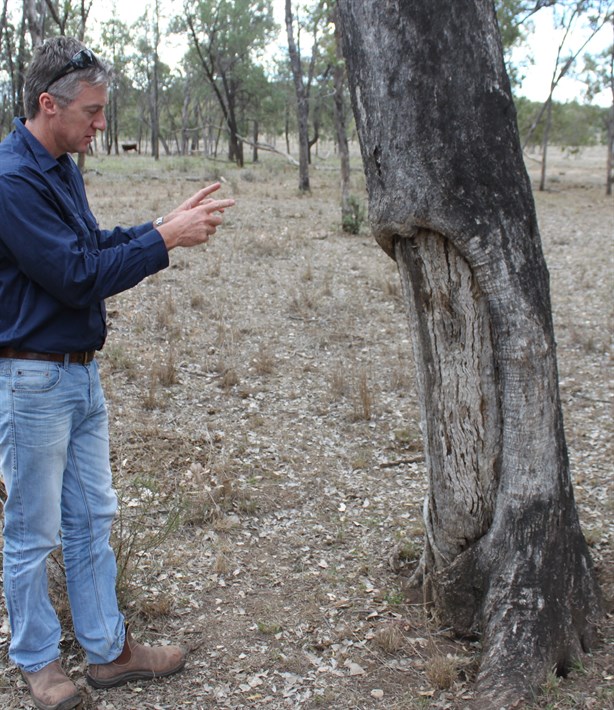Human modified scarred trees, or Aboriginal scarred trees, are one of the more identifiable and visible features in the natural cultural heritage landscape. However they are also regularly misidentified because scars can be the result of natural processes or human activity. Human modified scarred trees are by definition any scar created by a human on a tree. Typically in Aboriginal culture it’s the action of removing the bark for a specific purpose such as a coolamon, shield or roof sheeting.
The scarring is not restricted to just removing the bark. There is also the removal the hardwood under the bark for the manufacturing of boomerangs, the incision of toe holds to scale a tree or the opening of hollow limbs for the extraction of animals, honey or the concealment of burials. Usually the scarring actions do not kill the tree and it responds by growing scar tissue around the site of the wound. The evidence of human modified scarred trees represents an early and sustainable form of manufacturing, food procurement and mortuary practice (burial). They therefore can provide much information on types of artefact manufacture, species preference for different types of implements, resource distribution through the landscape lending to an understanding of the procurement strategy employed by the First Australians. They are a finite resource with very little scarring of trees happening in any meaningful way in modern society. Indeed the clearing of vegetation and the lack of new scarring suggests that human modified scarred trees are an artefact of their time and becoming rare.
Today Aboriginal scarred trees are often restricted to reserves, or other areas that have avoided broad scale clearing. The preservation of the scar is linked closely to the species of tree with some species preserving scars better than other e.g. poplar box (Eucalyptus populnea) preserves a scar better than a River Red gum (E. camaldulensis). The relative health of the tree and the longevity of the species also have a bearing on the preservation of human modified scar trees. The other complicating factor in identifying human modified scar trees is determining if the scar is derived either from Aboriginal traditional activity or European’s actions. Typically this is determined via the observation of shape of the scar, estimate of the tree’s age and association of other artefacts nearby.
Here is a quick determination guide when you suspect you have an Aboriginal scarred tree in the field:
- Shape of the scar: specifically even and relatively parallel sides, giving the scar a rough symmetrical shape often oval with squared off top and bottom unless there has been bark retreat from regrowth or post scarring trauma. The scar should look like useable object e.g. coolamon, dish, sheet, canoe etc.
- Axe cut marks: either steel or stone axe’s (NB trade in steel axes through Aboriginal Australia outstripped exploration by Europeans).
- Height of scar above ground level: scars usually end above ground level, unless there has been insect attack, bark retreat, fire at the base or cattle chewing it.
- The age of the tree: the size and girth of the tree relative to those around it – typically traditional scarring on a tree is going to be in excess of 150 years therefore the tree will need to be mature with significant girth.
- Depth of regrowth: the lateral margins will show regrowth which provides an approximate age of the scar.
If you require cultural heritage services for your project, contact RedLeaf Environmental archaeologists today. RedLeaf provides expert scarred tree identification and determination.
- Distinguishing between Aboriginal and European forms of scarring
- Identification of natural and incidental causes of scarring
- Significance assessments
- Scarred tree management plans
- Scarred tree relocation and conservation
- Training sessions and workshops to improve awareness of scarred trees, tailored to any work situation or community engagement

An example of an Aboriginal Scarred Tree with parallel sides, Orange Tree Creek Road, Murweh Shire. Dr Anthony Simmons, Redleaf Environmental Associate Archaeologist.


